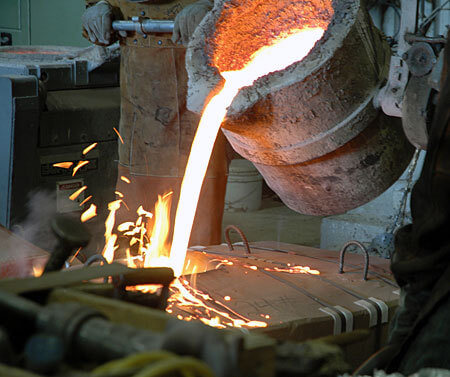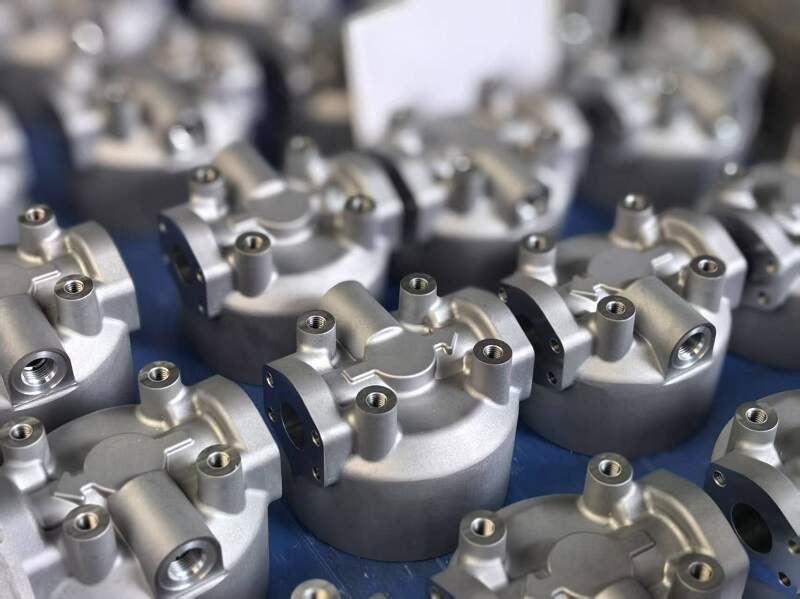How Aluminum Foundry Helps Create High-Precision Components for Every Industry
Wiki Article
Aluminum Casting Techniques: a Deep Study Products and Techniques for Success
Aluminum casting techniques play an essential role in production. Numerous approaches exist, each fit to different applications and demands. Sand casting is preferred for larger parts, while die casting is known for its precision in high-volume manufacturing. Financial investment casting offers thorough styles with superior coatings. Understanding these differences can significantly impact task results. Aluminum Casting Company. Nonetheless, picking the proper method is not always simple, bring about vital factors to consider that must be explored even moreUnderstanding Aluminum Casting: A Summary
Aluminum casting is a necessary production procedure utilized throughout various sectors to develop elaborate elements with high precision. This method involves putting molten aluminum right into a mold and mildew, permitting it to take the form and solidify of the desired component. The adaptability of aluminum, incorporated with its corrosion-resistant and lightweight buildings, makes it an ideal choice for applications in automotive, aerospace, and durable goods.Various casting techniques exist, each suited to details requirements and project scales. Elements such as mold materials, cooling prices, and the intricacy of the design play a considerable function in determining one of the most efficient approach. In addition, the homes of the aluminum alloy used can affect the final product's surface area, toughness, and longevity finish.
Recognizing the principles of aluminum casting allows suppliers to enhance manufacturing processes, reduce waste, and assurance top notch output, which is essential in today's open market.
Sand Casting: Methods and Applications
Amongst the various strategies used in aluminum casting, sand casting sticks out due to its versatility and cost-effectiveness. This method involves producing a mold and mildew from a combination of sand and binder, which can be shaped to accommodate intricate styles. As soon as the mold is ready, molten aluminum is poured right into it, permitting detailed attributes and details to be caught.Sand casting is specifically helpful for generating huge components and low-volume manufacturing runs, making it excellent for automobile elements, machinery components, and creative sculptures. The method likewise suits a range of aluminum alloys, enhancing its convenience in numerous applications. Furthermore, using sand as a mold and mildew product permits simple reclamation and reuse, adding to eco sustainable methods. Achieving high dimensional precision can provide obstacles, requiring skilled craftsmanship and careful control of the casting process. In general, sand casting stays a fundamental method in aluminum foundries worldwide.
Die Casting: Precision and Performance
Die casting is a very effective method of generating aluminum components with phenomenal dimensional accuracy and surface area finish. This procedure entails requiring liquified aluminum right into an exactly machined mold and mildew under high stress, which enables complex layouts and marginal material waste. The fast cooling of the alloy within the mold and mildew leads to a strengthened component that frequently requires little to no added machining.Die casting is particularly beneficial for high-volume production runs, where uniformity and speed are vital. It supports the production of complicated geometries, making it appropriate for various applications, including automobile, aerospace, and consumer products.
The procedure can accommodate various aluminum alloys, boosting the mechanical buildings of the finished items. With its capacity to produce light-weight yet durable elements, die casting attracts attention as a recommended method in modern manufacturing, supplying both precision and effectiveness in aluminum casting.
Investment Casting: Information and Intricacy
Investment casting, additionally called lost-wax casting, is a flexible and precise method for creating intricate aluminum components. This technique is specifically valued for its ability to develop detailed geometries and great details that are often unattainable through various other casting methods. The procedure starts with a wax pattern, which is covered in a ceramic shell. When the covering hardens, the wax is dissolved, leaving a detailed mold and mildew for aluminum putting.The advantages of financial investment casting include remarkable surface finish and dimensional accuracy, minimizing the demand for extensive machining afterward. It is specifically useful for little to tool production runs where precision is important. This approach fits different aluminum alloys, boosting its applicability across markets. Precision aluminum casting. Inevitably, investment casting attracts attention for its capacity to supply both visual appeal and useful efficiency in aluminum components, making it a preferred selection for designers and designers looking for complicated solutions

Selecting the Right Method for Your Task
Exactly how can one establish one of the most suitable aluminum casting approach for a specific task? The selection procedure pivots on a number of important aspects, consisting of the intricacy of the design, the wanted surface finish, and production quantity needs. For intricate layouts, investment casting typically verifies helpful as a result of its capacity to capture fine details. On the other hand, sand casting may be preferred for larger, less complex components, supplying cost-efficiency and adaptability in production.In addition, considerations relating to resistances and mechanical residential properties of the end product are important. For high-performance parts, die casting might be the ideal option, as it gives premium dimensional precision and surface area high quality. In addition, recognizing the material residential or commercial properties and compatibility with the chosen method is very important for making certain the success of the job. Ultimately, a comprehensive examination of these here factors will lead the decision-making process, causing one of the most reliable aluminum casting approach for the specific project at hand.
Frequently Asked Inquiries
What Is the Environmental Impact of Aluminum Casting Approaches?

Exactly How Can I Boost the Surface Area End Up of Cast Aluminum?
To improve the surface area coating of cast aluminum, one can utilize strategies such as sandblasting, polishing, and using layers. Appropriate mold and mildew design and temperature level control also greatly boost the final surface high quality of the cast product.What Security Safety Measures Should Be Taken During Aluminum Casting?
During aluminum casting, essential safety precautions consist of putting on protective equipment, making sure correct air flow, using fireproof products, preserving a risk-free range from molten steel, and sticking to devices safety and security protocols to avoid injuries and mishaps.Exactly how Do I Troubleshoot Common Casting Issues?
To repair common casting defects, one must inspect the mold and mildew for damages, evaluate the alloy structure, check putting temperature level, readjust cooling prices, and assurance correct airing vent to lessen air entrapment and enhance casting quality.What Are the Costs Linked With Various Aluminum Casting Techniques?
The prices related to numerous aluminum casting strategies differ significantly, influenced by aspects such as material expenditures, equipment, production, and labor scale. Spending plan considerations are essential for choosing one of the most appropriate casting approach for certain jobs.
Sand casting is favored for larger elements, while die casting is recognized for its precision in high-volume manufacturing. Amongst the different techniques used in aluminum casting, sand casting stands out due to its adaptability and cost-effectiveness. Die casting is a highly reliable approach of producing aluminum components with exceptional dimensional accuracy and surface coating. Financial investment casting, likewise recognized as lost-wax casting, is a exact and functional method for creating complicated aluminum components. How can one establish the most ideal aluminum casting approach for a certain project?
Report this wiki page